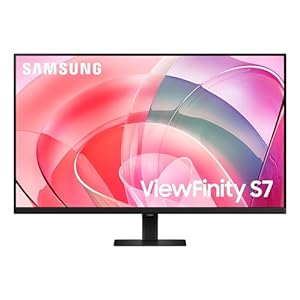After Android XR smart glasses, I was most excited to try out Google Beam, a shrunken and commercialized version of Project Starline 3D video calling booth that Google has been plugging away at over the past couple of years. Seemingly everyone who has tried Project Starline has told me how mind-blowing it is to video call with someone inside of what’s essentially a glasses-free 3D TV, and feel like they’re really sitting in front of them. I finally got the opportunity to try the technology at Google I/O 2025—it’s impressive, but it’s far from some perfect replication of the person you’re talking with.
Let me just repeat myself so there’s no confusion: that Google can replicate a person from a bunch of 2D videos that are then stitched together into 3D using a custom AI neural network is nothing short of wizardry. The 3D person inside of the screen really feels as if they’re sitting across the table. In my demo, which was actually using the older Project Starline setup and not the more compact one HP is making, a friendly guy named Jerome, who said he was being streamed from Seattle, Wash. to my screen in Mountain View, Calif., reached out to hand me an apple that was in his hand, and I instinctively tried to grab it. A few beats later, when he told me the demo was over, we high-fived—I, again, did it without much thought. All the while, during our 1-2 minute convo, we made eye contact, smiled, and laughed, as if we were together IRL. It was all very… normal.
Ridiculously short as my demo was, the limitations of the current version of 3D video calling technology were immediately obvious as soon as I sat down in front of the TV “booth.” When Jerome appeared on the screen, I could see that the 3D render of him was jittering very slightly. The entire time, I could see the slightly horizontal jitters as he moved around. The closest thing I can compare it to is like slightly jittery TV scanlines—but it was something that I noticed right away and became fixated on.
Another limitation is the camera tracking and viewing angle—it only really works looking at it dead center. Whenever I shifted my chair to the left or right, Jerome’s picture darkened and became distorted. Even with an 8K resolution, the light field display still looked grainy. I also noticed that if you try to “look around” the other person’s body, there’s nothing there. It’s just… empty particle-like space. That makes sense because Beam/Starline’s cameras are only capturing the front and parts of a person’s sides, not back angles. If you’ve ever seen the back of a person’s portrait mode photo (see below), you’ll know there’s just no captured data back there.
This is too cool: iPhone Portrait mode…exploded into depth layers pic.twitter.com/oA8FicilWG
— Ray Wong (@raywongy) November 22, 2018
I’m also suspicious as hell about how well Beam works in less-than-optimal lighting. The room I was in had nicely diffused lighting. I suspect that the image quality might be greatly degraded with dimmer lighting. There would probably be some real noticeable image noise.
I should also note that my chat with Jerome was actually my second demo. My first demo was with a guy named Ryan. The experience was equally as brief, but Starline crashed and his image froze, and I had to be transferred to Jerome. Prototypes! Sure, Zoom calls can freeze up too, but you know what doesn’t freeze up? Real-life conversations in person.
Because these units were Project Starline ones—the cameras and speaker modules were attached to the sides of the screen instead of built into them—there’s no way to know whether Google Beam is a more polished product or not.
I really expected to have my mind blown like everyone else, but because it felt so natural, the whole experience didn’t quite make me freak out. And I’m known for freaking out when some new technology seems amazing. Maybe that’s a blessing in disguise—there’s no shock factor (not for me, at least), which means the Beam/Starline technology has done its job (mostly) getting out of the way to allow for genuine communication.
Trending Products

SAMSUNG FT45 Sequence 24-Inch FHD 1080p Laptop Monitor, 75Hz, IPS Panel, HDMI, DisplayPort, USB Hub, Peak Adjustable Stand, 3 Yr WRNTY (LF24T454FQNXGO),Black

KEDIERS ATX PC Case,6 PWM ARGB Fans Pre-Installed,360MM RAD Support,Gaming 270° Full View Tempered Glass Mid Tower Pure White ATX Computer Case,C690

ASUS RT-AX88U PRO AX6000 Twin Band WiFi 6 Router, WPA3, Parental Management, Adaptive QoS, Port Forwarding, WAN aggregation, lifetime web safety and AiMesh assist, Twin 2.5G Port

Wi-fi Keyboard and Mouse Combo, MARVO 2.4G Ergonomic Wi-fi Pc Keyboard with Telephone Pill Holder, Silent Mouse with 6 Button, Appropriate with MacBook, Home windows (Black)

Acer KB272 EBI 27″ IPS Full HD (1920 x 1080) Zero-Body Gaming Workplace Monitor | AMD FreeSync Know-how | As much as 100Hz Refresh | 1ms (VRB) | Low Blue Mild | Tilt | HDMI & VGA Ports,Black

Lenovo Ideapad Laptop Touchscreen 15.6″ FHD, Intel Core i3-1215U 6-Core, 24GB RAM, 1TB SSD, Webcam, Bluetooth, Wi-Fi6, SD Card Reader, Windows 11, Grey, GM Accessories

Acer SH242Y Ebmihx 23.8″ FHD 1920×1080 Home Office Ultra-Thin IPS Computer Monitor AMD FreeSync 100Hz Zero Frame Height/Swivel/Tilt Adjustable Stand Built-in Speakers HDMI 1.4 & VGA Port

Acer SB242Y EBI 23.8″ Full HD (1920 x 1080) IPS Zero-Body Gaming Workplace Monitor | AMD FreeSync Expertise Extremely-Skinny Trendy Design 100Hz 1ms (VRB) Low Blue Gentle Tilt HDMI & VGA Ports







